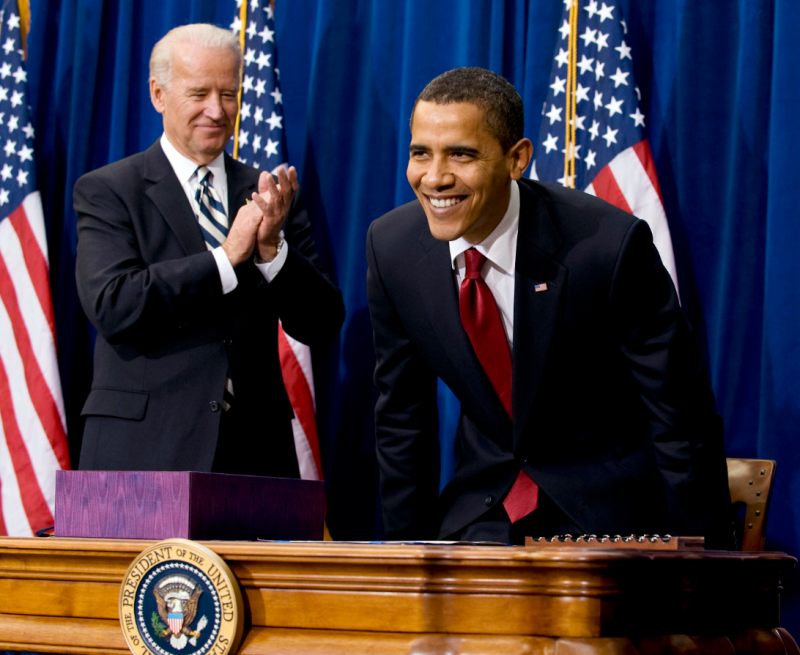One prognostication I’ve been seeing a lot is that Donald Trump will start his administration with a burst of fiscal stimulus: a big tax cut, an increase in defense spending, an infrastructure spending package.
And I’ve seen some Trump opponents note with alarm that whatever the long-run merits of such a policy, it would likely boost the economy in the short run and therefore allow Trump to start his administration with high popularity.
But I don’t think we should assume a Trump fiscal stimulus would be effective in stimulating the economy.
Often, debates over fiscal policy feel as if they are frozen in 2009 or 2011. Liberals got used to arguing that larger government deficits would boost an economy that was awash in idle capital and labor just waiting to be put to work because that was the situation at the time.
I think they were right at the time.
But even if an additional stimulus package would have been a good idea in 2011, that doesn't mean such a package would grow the economy in Trump's America.
Changing times, changing needs
The American economy is approaching full employment. Interest rates remain low, but they have risen sharply since Trump's election: The 10-year Treasury bond yield has gone from 1.86% on Election Day to 2.33% as of Monday.
Because of limited slack in the economy, a large fiscal stimulus today could actually have the effects that conservatives incorrectly warned of in 2009: higher government borrowing costs, a crowding out of useful private-sector projects due to higher interest rates, and inflation.
A Trump stimulus would also likely be offset by Federal Reserve action: the Fed could be expected to accelerate its interest rate increases to stop inflation, and those higher rates would further crowd out private investment, preventing the economy from overheating.
Of course, Trump could try to pressure the Fed against tightening, but he does not directly control its actions. Many Republicans in Congress have an ideological commitment to hawkish Fed policy and would be unlikely to look kindly on a Trump effort to pack the Federal Reserve Board with money printers.
And if Trump succeeded in pressuring the Fed to allow the economy to overheat, then you could really expect inflation - which wouldn't be popular with the retirees whose votes put Trump over the top in the election.

Deficits weren't always fun
It's worth thinking about the recent history of deficit politics in the United States and how it could be misleading us.
In his warning that Democrats should avoid working with Trump on infrastructure, Jonathan Chait portrays deficit fights as a false morality play, where Republicans open the spigots when they run the government and take credit for economic growth, and then force Democrats into painful austerity later.
"Republicans blew up the deficit under Ronald Reagan, then fomented hysterical warnings of insolvency under Bill Clinton. When Clinton's policies structurally balanced the budget, they unbalanced it with massive tax cuts, a military and security buildup, and a prescription drug benefit, all entirely debt-financed. When the first signs of recession appeared in early 2008, Republicans did support a Keynesian stimulus bill. As Obama entered office, the seeming mild recession that had spurred both parties to action a year before had spiraled into a bottomless crisis unlike any in memory. But at the moment the justification for Keynesian stimulus had become stronger than at any time in the previous 80 years, Republicans embraced austerity, insisting temporary deficit spending would worsen the economy."
This is correct in regard the post-2001 history, but it misses a lesson from the 1980s and 1990s that may prove relevant in a Trump administration.
There was a time when too-high deficits caused high interest rates, which were unpopular. This meant cutting deficits wasn't just an exercise in making your constituents hate you and Pete Peterson like you. If you cut the deficit, interest rates went down, and that made it easier for businesses to invest and consumers to pay their bills.
So in 1993, President Bill Clinton sought and signed a deficit-reduction package from the Democratic Congress - no hysterical Republican warnings needed.
In 1990, President George H.W. Bush agreed on a deficit reduction package with Democrats in Congress. This law was unpopular with many Republicans because it raised taxes after Bush promised not to raise taxes, but Republicans' preferred alternative policy was an all-spending-cuts package, not higher deficits.
What's changed in the intervening years was that interest rates remained low. So even though there were large government deficits in some years, these did not impose a significant drag on the economy. Calls for deficit reduction were all politics because during this period there was not a strong policy reason to cut the deficit.
But that need not be true forever, and a large burst of deficit spending not prompted by an actual economic downturn would be exactly the sort of policy you would need to bring the low-interest-rate, deficits-don't-hurt era to a close.
Short run vs. long run
Of course, the budget deficit is not the only way in which fiscal policy affects the economy, and Trump's policies could grow the economy through other channels. For example, he could implement tax cuts that are specifically designed to encourage investment and work, or he could build infrastructure that grows the productive capacity of the economy.
I am skeptical that Trump will deliver a lot in the long-run growth area, though I do think one of his major policies - a cut in the corporate income tax rate - would be long-run growth-positive, whatever its distributive merits.
But when thinking about whether Trump is likely to enter office with a short-run burst in growth, the key is to remember these supply-side matters are for the long run: Lower corporate income taxes could encourage corporate investments that make the company gradually more productive over years and decades, but they won't do much to boost next quarter's GDP growth number.











